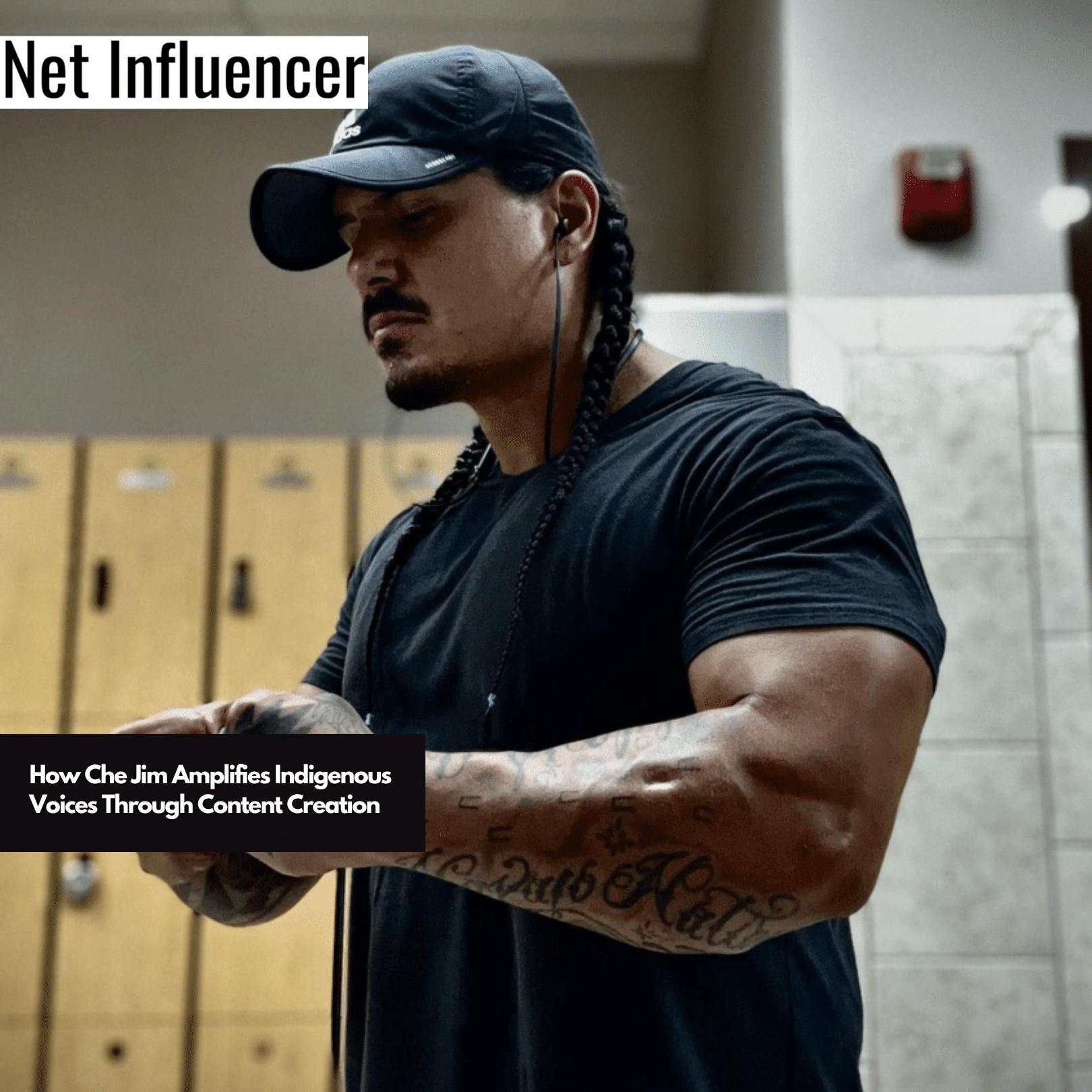Influencer
How Che Jim Amplifies Indigenous Voices Through Content Creation

With 2.6 million followers, former military servicemember turned content creator Che Jim transforms reluctant TikTok downloads into a powerful platform for Indigenous advocacy and entertainment.
Finding a New Path in Content Creation
Che initially resisted joining TikTok until “peer pressure” changed his mind. Unlike anything he had seen before, the platform’s thriving Indigenous community caught his attention.
“My only exposure for this type of short-form content was Vine, and I don’t remember there ever being a large Indigenous community or representation on that app when it was up,” Che explains. “So it didn’t interest me whatsoever. I didn’t feel like there was a place for Indigenous people on anything like that thus far.”
His impact was immediate. “I made my first viral video my first week on the app,” Che recalls. My first video went viral on Indigenous Peoples’ Day and was one of the first two or three videos I ever made.”
The timing proved perfect: “I wasn’t expecting this to take off. I’m not taking anything from myself—I know I’m good at it. But I also feel like there was the circumstance, and the environment was primed for someone like me to come on there.”
Creating Impact Through Entertainment
Che’s content strategy merges entertainment with education. While comedy anchors his work, his creative scope extends far beyond humor.
“I am a native person, I’m an indigenous person, and I made my claim to fame with comedy, but I do not put myself in that box,” he states. “I’ve done horror skits, educational things, and political advocacy.”
His content mirrors his personality. “All the skits I do on TikTok, comedy-wise, I do in real life. I am a menace in my household,” Che laughs. “And people always encouraged me, ‘You should do what you do at home on film.'”
This genuine approach enables him to address crucial Indigenous issues while maintaining audience engagement.
“I’ll do a funny skit, but in the way that it’s outlining or bringing attention to issues like tribal sovereignty or misrepresentation in media,” he explains.
“A big one for Halloween [this year] was because people still dress up and wear war bonnets. There are people out there who do dress up as natives and Indians from a costume store. Super harmful. I’ve done a lot of skits making fun of those people. It’s funny, and people enjoy it. But if you look at the comments, there’s a whole conversation going on,” Che shares.

Source: @che_jim
His content creation process continues to develop. “In the beginning, it always sounded bitey. I would adjust whatever trending sounds or skit audios I could find to my idea,” he reflects. “Over the last year or so, the app has encouraged more original content, and that’s what I’ve been doing. More recently, I’ve been doing more original things using my sounds and creating my soundscapes, and that’s just part of the evolution of any artist.”
This diverse approach drives his success. “I think that what’s made my content as successful as it has been is because I’ve created more intersectionality and diversity in my content, where you’ll find comedy, but that’s only half of what I do,” he says. “The other half of it is just a mod podge of everything else.”
“You must understand your audience and the climate you’re putting yourself into based on the demographic drawn to your content,” Che emphasizes. “You want to make enjoyable, consumable content that people can enjoy time and time again. That’s how you get followings, support, and brand deals.”
Amplifying Indigenous Voices
As Native Americans represent one of the smallest demographics in the United States, their perspectives often go unheard. Che uses his platform to change this reality.
“When you have professional sports teams named after the identity or the dark history of an entire people that no longer exist on this land… they talk about us as if we’re extinct,” he points out. “That’s why they can get away with calling them the Washington Redskins. No one ever corrected it. When you bring it up, they ask, ‘Why is it a problem? It’s always been that name.’ What other team do you know that’s named after an entire race of people?”
His commitment to advocacy predates his social media presence.
“Activism is something that I’ve been doing my entire life,” Che explains. “When I was young, being a Native American person, I grew up close to my community on a reservation for several years. And we’re faced with a bunch of social, economic, political issues, and a lot of them are tied to historical trauma and our relationship with the U.S. government.”
These early experiences shaped his mission. “There is an education that we gave ourselves that I got from my mom, my dad, my uncles, to teach about the uncomfortable truths of the history of Indigenous people,” he shares. “To carry on that truth and story, I feel obligated to give back and protect my people and future generations.”
His content helps inform audiences with limited exposure to Indigenous perspectives.
“Less than 1% of the entire state of Indiana identifies as Native American,” Che notes from his experience living there. “When I bring up a point or perspective that’s typically not heard, they don’t understand it because they’ve become so conditioned. And now when they’re faced with a much larger presence, like somebody with 2.6 million followers, that’s bringing attention to this—it hits different.”
Social media provides direct communication channels. “Now we have platforms that allow people like myself to talk about these things without going through someone else,” he explains. “I can talk to you directly through this camera, whereas before, I would have to depend on and hope that someone’s doing a documentary somewhere on the Rez so I can get in on it. It’s different now.”
His advocacy transcends basic education. “Even getting someone to know, sadly, has to fall in the category of advocacy or activism, and it shouldn’t, but it does,” Che reflects.
“Teaching the truth and understanding—hey, this is what’s happening,” he adds. “So many people just don’t want to see it, don’t want to acknowledge it, or don’t want to acknowledge you, your history, or your voice. It’s hard… I found myself early in life kind of feeling like that’s something that’s part of what I have to do as a Native person.”
Growing a Business While Staying True
The business aspects of content creation brought new challenges. When followers requested merchandise, Che carefully selected Rez Life, a Canadian company specializing in Native-inspired and Native-made designs, as his partner.
“I wanted to find the right company who has the right vibe and understands me and who I am as a creator,” Che explains. “I don’t want it to be strictly business, but I want these people to understand because, again, I am different because I’m Native.”
The collaboration proves rewarding: “I’ll go to a powwow and see someone wearing my shirt. It’s pretty cool because they represent supporting Indigenous artists like myself while also helping me personally.”
He discusses creator challenges openly, particularly regarding content theft and platform support. “Content that is monitored, stolen, and monetized on another account… I’ve seen dozens of videos of people saying, ‘Please, can someone help me?’ And I’m like, I don’t have the answer either. There’s nothing we can do.”
He advocates for enhanced platform support systems, given creators’ income instability.
“For those people who have left their jobs and poured their hearts and souls and support their families and pay their bills, it’d be nice if these platforms made adjustments,” he argues. “I’ve known many people who’ve said, ‘I’m no longer going to be posting because I can’t compete with these fake profiles. Since this profile came up, my income has been cut in half.'”
New Horizons in Indigenous Education
Che’s next chapter includes hosting Crash Course’s YouTube channel and leading a 25-part series on Native American history.
“I’m super stoked about that. I was made for this,” he shares enthusiastically. “Doing a series on Native American history that will be shown to hundreds of thousands of kids in college all across the United States and Canada is huge—this is what I was working towards.”
The move aligns with his content evolution. “When you first start doing the content, you’re doing the short form, you’re doing skits, you’re playing characters, but eventually, the natural progression of things is that people want to know more about you,” Che reflects.
“That’s the feedback I’m getting—people want to be more conversational and less entertainment-like skit-wise. I’m always resistant to change, but I will do it. Everyone is asking for that kind of content.”





















